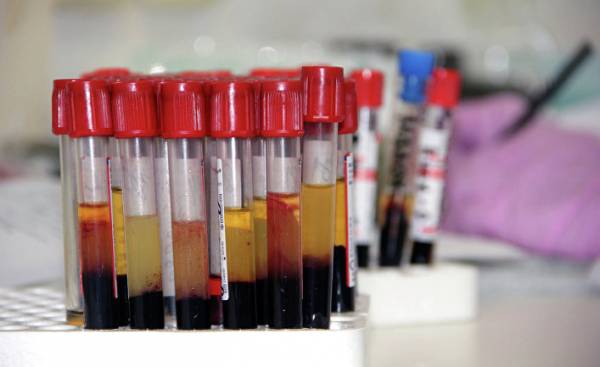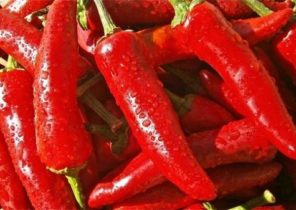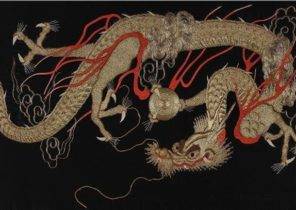
We, the people, different blood types, as well as different color eyes and hair. But why is this so? And whether it makes sense to stick to supply in accordance with your blood type?
Knock! Knock! Knock!
You chopped onions, and suddenly the knife suddenly jumps and leaves a decent gash on your thumb. Immediately begins to flow blood — red, sticky liquid that is in all of us, and looks the same, who would she belong to.
But although the blood looks the same, there is a difference in its composition. Because people differ in the types of blood.
In this regard, one of our readers, Frits møller (Frits Møller), asks the question:
“I don’t quite understand why people have different blood types? What’s the difference?”
Blood types are determined by genes
Videnskab. dk has referred this question to the two scientists, large experts in this field, doctor of medicine and philosophy Morten Hanefeld Jigilo (Morten Hanefeld Dziegiel) from the blood Bank at Government hospital and the Barrington Torben (Torben Barington), Professor and doctor of medical Sciences from South Danish University.
Morten Hanefeld Jigal explained that the blood types are determined by our DNA.
“Certain blood types correspond to specific genes. In the process of our evolutionary development of the human mutated genes that gradually led to changes in our genetic material. Because of this, including that there are different types of blood,” he says.
Professor Torben Barrington said that in the course of human development, without a doubt, there were many more ancient blood types, which is not gone, as those genes were unsuccessful.
This development is constantly ongoing and, in fact, the phenomenon of our different blood groups, is the pledge that we, the people, are still successful.
“From the point of view of the development that we are different is an advantage. The more people among genetic variants, the more likely it is that we as a species will cope with the disease, as it makes us more stable,” he explained.
System AB0 and RH are most important during blood transfusion
Both scientists say that there are many different types of blood, which vary from person to person. To determine what type of blood it is, there are 30 different so-called “systems of blood groups”.
Two of the systems of blood types are crucial in connection with blood transfusions:
1. So-called “System AB0” (pronounced AB-zero)
2. The so-called RH factor
“The system AB0” was invented in 1901 by Austrian Karl Landsteiner (Landsteiner, Karl), and it was an innovative invention.
It is possible to divide all people according to their blood types — today widely known groups A, B, AB and 0 (zero).
Another system of blood types, RH factor, was invented around the second world war and is considered by doctors second in importance types of blood in connection with blood transfusions.
People inherit blood type from their parents
Those genes that a person receives from their parents, determine what blood type he will have. Namely, the parents transmit their genes that “encode” the type AB0 and rhesus-factor — a gene from each parent, explains Torben Barrington.
Genes that are responsible for A and B are equally dominant, while the gene bearing the null recessive. Therefore, to ensure that the child had blood group 0, it is necessary that both parents gave him the gene responsible for blood group 0 (see figure above).
This means that if for example a man inherits the gene for blood group A from one parent and a gene for blood type from another, he will receive a blood type AB, since A and b are equally dominant.
If a person inherits from one parent and 0 from the other, it will have blood type A, so as to suppress A 0. Such dominance, however, does not exclude the probability that he will pass the gene for blood group 0 to their children, it remains a 50% chance, explains Torben Barrington.
The distribution of blood groups varies around the world
Blood groups vary from nation to nation around the world. In Denmark, most of those who have blood group A (44%). Then comes blood group 0 (41%) and b (11%), and least common blood group AB (4%).
“Distribution of blood groups in the world may be due to migrations of peoples. We, those who live in Europe or Asia, probably all descended from a small population of people with a relatively small variety of genes that came from Africa about 50tysyach years ago,” says Morten Hanefeld Zigil and continues:
“At some point in time, some groups went East, others West, others North, and for many generations, the separated populations evolved in their own ways with their different types of blood.”
Mountain ranges and deserts could have an impact
Therefore, the distribution of blood groups in one population is the result of genetic variability of the original group of people; changes that happened as a result of natural selection, plus those genes that were obtained through exchange with other populations. Mountains, deserts, seas and other geographical barriers could also influence the process, as one or the other population could therefore be more or less isolated.
In isolated populations will be less genetic variations that may help to explain the fact that, for example, among the indigenous Indians of Peru and Brazil, there is only blood group 0.
In General blood group 0 in about half of all people on earth, but in the East through Central Europe and Asia, the group 0 is becoming less common, and In and AV often. For example, 30% of Asians are group B.
There is no evidence that you should eat according blood type
Some people would like to have information about their blood group with the purpose of health care. Lately there is a new food concept, according to which good for health to eat in accordance with your blood group.
One of our readers, Candler Lasse (Lasse Kandler), would like to know is there any truth to this new mania:
“What evidence is there that the blood and nutrition have an effect on each other?”, — he asks.
Morten Hanefeld Zigil from the blood Bank wouldn’t say that in this opinion there is at least some truth.
“I have not dealt with this issue, but it seems to me that this is a fantasy. From my point of view, the statement that blood groups play a role is just a random fiction about the variability of people.”
No need to build a diet based on blood group
“We should rather speak about what our food and our environment favored people with certain traits. They allowed us to be resistant to certain things and our bodies to absorb certain foods. We Europeans, for example, for many generations used to process the sugar in cow’s milk as adults. The Africans, on the contrary, cow’s milk diarrhea begins. But I don’t think it has something to do with blood,” he says.
Professor Torben Barrington I agree with Morten Hanefeld Digilem. He adds:
“This view is absurd, there is no scientific evidence that our blood type says something about what we should eat. I would not recommend them to build your diet based on what your blood type”.
Faith can move mountains
When someone says that diet blood type works for them, it may be due to several factors, explains Torben Barrington.
“First, as is the case with many things, faith can move mountains, but the human brain is designed so that when we experience two things coincided, we tend to think that between them there is a causal relationship”.
“It requires an objective survey of many people to determine a coincidence or not. But it seems to me that many in this group can agree that something is happening a certain way — while the scientific study will show the opposite,” he says.
Changing my diet gives results by itself
He adds that a change in diet alone can have a beneficial impact on many people, as they become more attentive to it and eat more healthy foods. This fact may help to explain what may seem right to eat in accordance with your blood type.
“When at the origin are all bad, the result is usually better if you take something. For example, if you have digestive problems, a change of diet may have a beneficial effect. If this is not the slightest connection with the blood,” says Torben Barrington.
Videnskab. dk thanks for your help Morten and Torben Zigis of Barrington. And thanks to our inquisitive reader.
If you have any questions — both large and small, then you can send them to us at sv@videnskab. dk. You can also read the answers to other good questions in the section Spørg Videnskaben.
Blood groups in animals
In different animal species have different blood groups, but have not yet investigated all kinds. We were told about this veterinarian Copenhagen zoo Mads Berthelsen (Mads Bertelsen).
Antigens of the human blood group system ABO was found also in these monkeys, like chimps, bonobos and gorillas, but their blood group is not identical to the human. So will not be able to carry out blood transfusions between apes and man, besides, monkeys carry various viruses that can be transmitted to humans.
The reasons why animals have evolved different blood groups may be the same as in humans, said Mads Berthelsen.
“It appears that different blood groups within the same species due to the fact that it makes the view more resistant to diseases, and so, of course, in animals, there is much more blood than we had to install to date”.
Dogs also do blood transfusions
In addition to determining the blood groups of some species of monkeys have been studied blood groups in dogs, cats and horses.
“The dogs were identified, eight internationally recognized blood groups, which are used when the dog needs to do a blood transfusion,” says Mads Berthelsen.
Cats, horses and cows also do blood transfusions. In cats found three different blood types, while horses and cows eight and eleven blood groups, respectively. And the pig found 15 blood groups.
Blood of birds, fish and reptiles have not been studied, according to Mads Bertelsen.
“But I’ll be very surprised if these types of will not be different blood groups,” he says.







